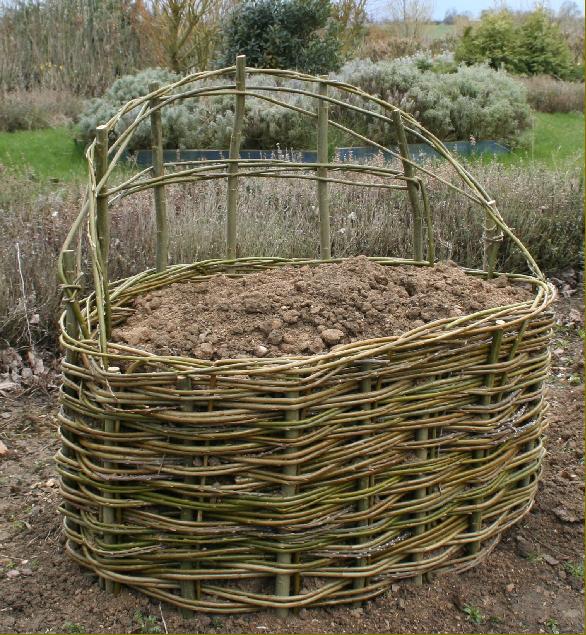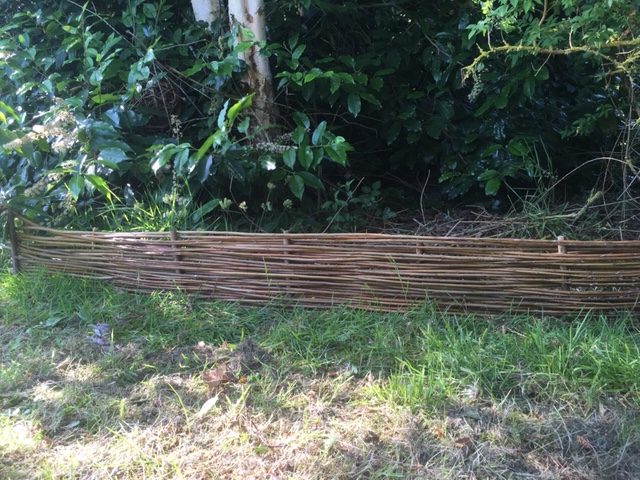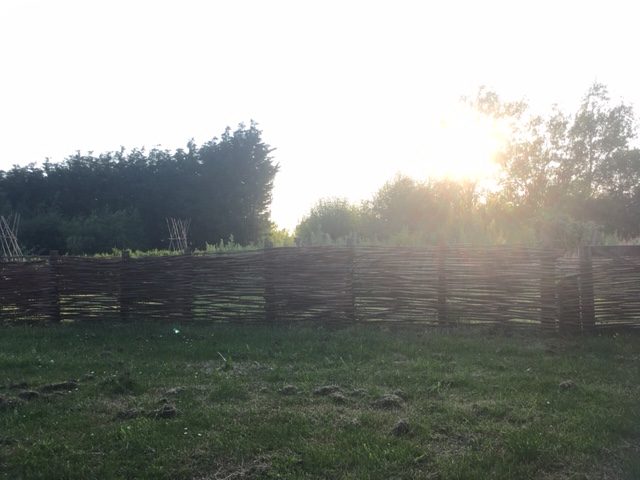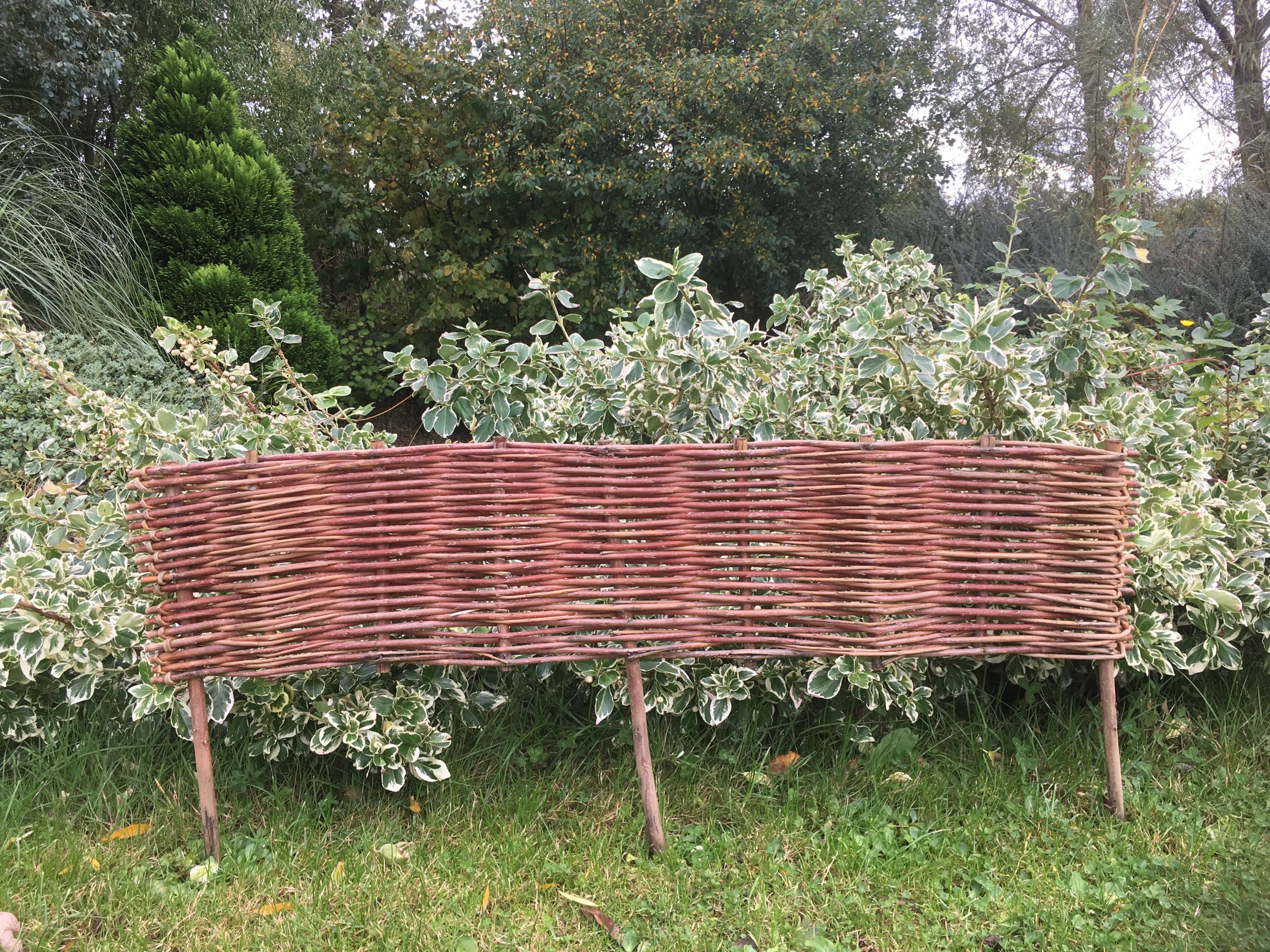'Dead' Willow from Willows Nursery
"More weaving ideas and information" Firstly, (and you might think that this is an odd thing for a website
trying to sell willow to point out) willow is not the only weaving material !
The general rule is that any long thin plant material that you can wrap around your wrist
once without it snapping can be used to weave a basket or anything else you’d like to try and
weave – and, depending on your project, it might not even need to be that flexible
Of course, in other parts of the world – where willow is not a native plant – different materials have always
been commonly used for weaving . . . . . . . . . so, why don’t you see what you you can find and experiment !
Meanwhile, back to willow . . . .
How much willow is needed to weave a . . . . . ?
We are often asked how much willow will be needed to weave a fence or border edging and the short answer is that it’s difficult to say as it depends on the type of weave and how densely it is packed. It also varies according to the length and, therefore, thickness of the willow used.
As one example, in the past we have sold willow to create the soil filled woven willow seat shown in the photograph.
As well as the thick cuttings to be planted vertically and to be woven around, we supplied one bundle of 3 to 5 ft (0.9 to 1.5 m) long willow whips to be used to create the weaving where the intended approximate dimensions of seat were 30 inches wide x 24 inches deep and 16 inches high to the seat (75 x 60 x 40 cm). That gives approximately 9 to 10 square feet (0.8 to 0.9 sq. m) of weaving and that bundle was sufficient with a little left over.
There are other examples below . . . . . .


For this basic 7 inch high x 6 ft (18 cm x 1.8 m) long lawn edging, 38 x 6 ft (1.8 m) long whips were woven around some thicker ‘dead’ willow stakes (at 10 inch (25 cm) spacing) to create 3 1/2 sq ft (0.3 sq m) of weaving.

For this simple garden fence, we used 230 x 9 to 11 ft (2.7 to 3.3 m) long whips (woven around some fence posts) to create a fence
29 ft long x 2 1/2 ft high – 72 1/2 sq ft/6.7 sq m.

A friend of ours decided to make small hurdles to use for garden edging. Each
9 inch high x 3 ft (23 cm x 0.9 m) long hurdle was made with 36 x 6 ft (1.8 m) long whips (plus 8 chunky stakes to weave around – 3 left long to push into the ground) (2 1/4 sq ft).
What can I use as verticals to weave around ?
Probably the most important thing is that, whatever you use, you make sure that it is pushed into the ground deeply enough to be firm and secure – it needs to be able to withstand the forces exerted as you weave around it. Also, it should be much thicker (or stronger) than the weaving material so that it doesn’t distort – the weaving material should bend, not the post !
So, you can use, thicker willow whips or other wood such as hazel or treated* fence posts or even metal posts.
*untreated willow or other wood will become rotten over time.
Using as an edging for raised beds –
To help the willow last longer (and to help retain soil and water in the bed) it would be best to line the inside of the willow weaving.
Willow as an edging to hold plants of a path or lawn –
You could weave an edging for this purpose or you could plant hoops to make a scalloped style edging.
(This photo is of willow planted for a living edging, but the principle is exactly the same.)
